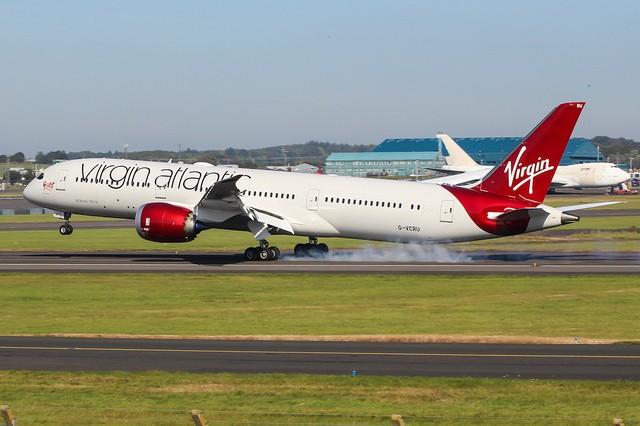
After five years of research and development, Virgin Atlantic and one of its clean-technology partners, Illinois-based LanzaTech, developed a source of jet fuel made of waste gases from steel mills. According to the companies, this new source of jet fuel passed extensive tests that both delivered on performance and promise to result in carbon emissions savings of 65 percent compared to conventional jet fuel.
This discovery comes at a time when airlines, seeking to mitigate what is a carbon-intensive business, have long dabbled with jet fuel blended with algae and other biofuels. The Dutch carrier KLM experimented with algae fuel blends, has flown transatlantic flights using blends of kerosene and cooking oil, and is still apparently committed to sourcing these fuels when available. Alaska Airlines also considered using recycled cooking oil to reduce its carbon emissions. Earlier this year, United kicked off flights between San Francisco and Los Angeles using a biofuel-conventional blend. Aviation fuel using feedstock from Brazilian sugarcane is also touted as an option.
But the problem with the development of more sustainable jet fuel boils down to one word: scale. A blend of 5, 10 or even 50 percent sounds impressive. But airlines are still struggling to get a seat on the carbon-reduction bandwagon – and air travel is still on the rise worldwide. The struggle with expanding capacity for fuels such as algae-based oils is one reason why one giant in the industry, Solazyme, transitioned away from a focus on biofuels, rebranded itself as TerraVia, and now sees foods made from algae as its cash cow.
Virgin Atlantic and LanzaTech suggest they have a more scaleable option. LanzaTech’s process involves capturing carbon monoxide gas from steel mills and other carbon-intensive industries. That carbon monoxide is then collected and fermented into alcohol, which can eventually be transformed into ethanol feedstock. The companies say each gallon of that ethanol can be converted into a half gallon of jet fuel, while reducing emissions from steel mills by up to a third.
Some say this does not really solve the carbon emissions problem, as emissions from one dirty industry are simply collected and burned off by another. But LanzaTech estimates that 15 billion gallons of jet fuel could be produced should this technology scale, enough to meet almost 20 percent of the global aviation industry’s fuel requirements.
The first phase generated 1,500 gallons of jet fuel. To put those numbers in context, a Boeing 747 consumes 1 gallon of fuel per second. (Do the math and compare airplane vs. automobile mileage, and you could argue that flying by air is more efficient than driving by car given the number of passengers.) So, we are still left with that pesky question of scale, as this is only enough fuel to fly a puddle jumper from a Central Valley town to a larger California air hub.
Nevertheless, innovation by the likes of Virgin Atlantic and LanzaTech is more than just being “sustainable” or wowing stakeholders. This is another step as scientists and entrepreneurs find ways to create fuel that has is more efficient and with a reduced impact on the planet.
Image credit: Mark Harkin/Flickr

Leon Kaye has written for 3p since 2010 and become executive editor in 2018. His previous work includes writing for the Guardian as well as other online and print publications. In addition, he's worked in sales executive roles within technology and financial research companies, as well as for a public relations firm, for which he consulted with one of the globe’s leading sustainability initiatives. Currently living in Central California, he’s traveled to 70-plus countries and has lived and worked in South Korea, the United Arab Emirates and Uruguay.
Leon’s an alum of Fresno State, the University of Maryland, Baltimore County and the University of Southern California's Marshall Business School. He enjoys traveling abroad as well as exploring California’s Central Coast and the Sierra Nevadas.














